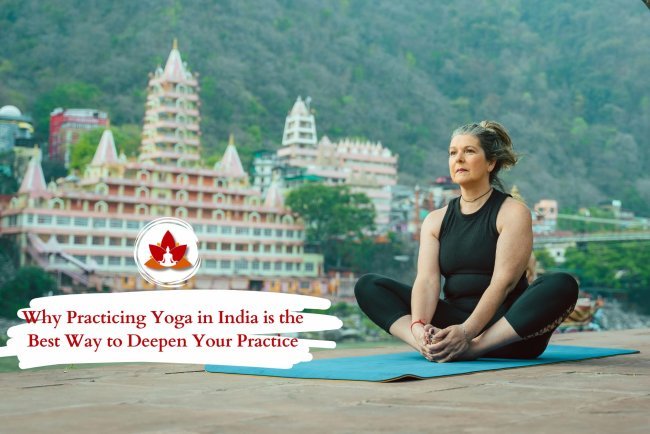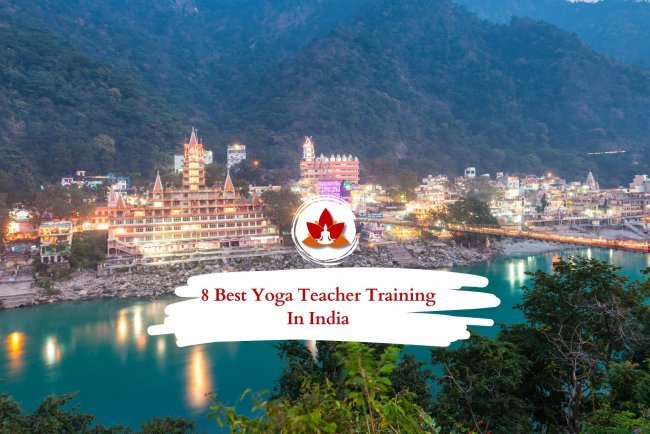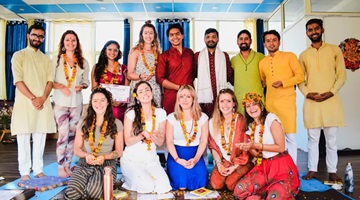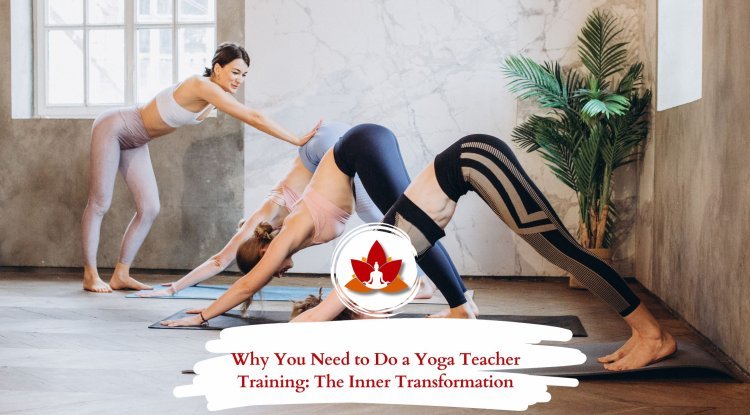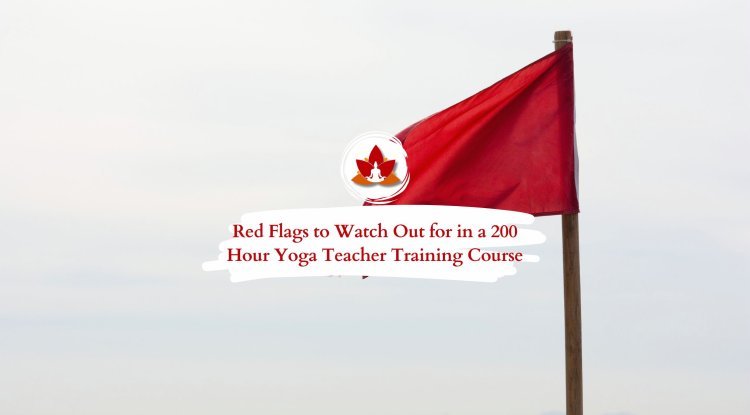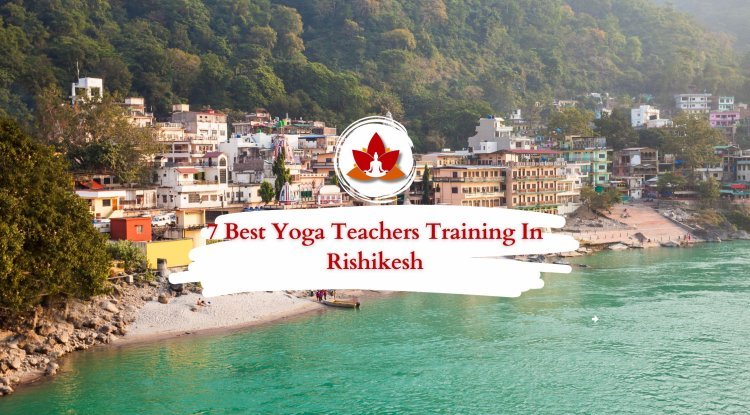Ashtanga Vinyasa Yoga Teacher Training
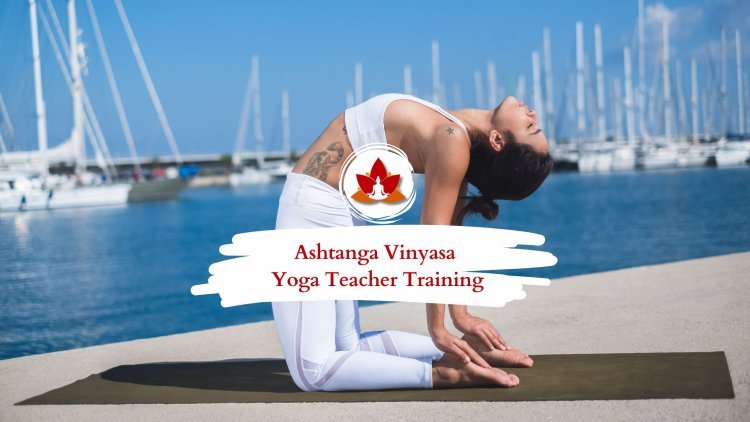
You’ve been practicing yoga for a while now.
Maybe you started with the gentle flow of Hatha yoga.
Or perhaps it was Vinyasa that got your heart racing and your energy flowing.
But lately, something inside you is asking for more — not just more movement, but more meaning.
Something with structure, with discipline.
Something that tests your body while quieting your mind.
That’s when you come across it: Ashtanga Vinyasa Yoga.
A tradition-rooted, breath-led system.
Precise. Demanding. Transformational.
A practice that doesn’t just welcome you — it asks everything of you.
And suddenly, a question rises:
Is this what my yoga practice has been leading me toward?
You may hear that small voice whisper:
“Am I ready for something this intense? This rigorous?”
The early mornings. The set Primary Series.
The hands-on adjustments. The philosophy, the Sanskrit, the rituals.
It’s easy to feel daunted.
But here’s the truth:
Ashtanga isn’t about being ready. It’s about showing up.
Showing up — to the mat, to the breath, to yourself.
Because Ashtanga Vinyasa isn’t just a style. It’s a path.
A deep discipline. A mirror. A lifestyle.
And becoming a teacher of this method?
That’s not just about memorizing postures.
It’s about cultivating presence, devotion, and integrity — on and off the mat.
So maybe this is your call.
To step beyond comfort and enter the rhythm of breath and movement that has transformed thousands of lives before yours.
If this speaks to you — keep reading.
We’ve outlined everything you need to know about Ashtanga Vinyasa Yoga Teacher Training and how to find the program that’s truly meant for you.
What is Ashtanga Vinyasa Yoga?
Yoga, an ancient practice from India, has been guiding seekers for thousands of years — and today, it continues to thrive around the world as a holistic path to balance and self-realization. Among the many styles of yoga, Ashtanga Vinyasa Yoga stands out as a dynamic, powerful, and deeply transformative discipline.
Rooted in tradition yet adaptable to modern life, Ashtanga Vinyasa Yoga offers a structured and consistent practice that promotes strength, flexibility, mental clarity, and spiritual awareness.
Origins and Lineage
The Ashtanga Vinyasa system was founded by Sri K. Pattabhi Jois in 1948 and is based on the ancient teachings of yoga, particularly those outlined in the Yoga Sutras of Patanjali. The term “Ashtanga” translates to "Eight Limbs," referencing Patanjali’s eightfold path—a guide to ethical living and spiritual evolution.
In Ashtanga Vinyasa Yoga, postures (asanas) are performed in a specific, sequential order, synchronized with the breath (pranayama) and internal focus (drishti). This flowing system builds heat in the body, creating a detoxifying sweat while fostering physical discipline, mental focus, and emotional resilience.
Ashtanga Vinyasa Yoga vs. Ashtanga Yoga Philosophy
A common misconception is that Ashtanga Vinyasa Yoga and Ashtanga Yoga refer to the same thing. While they are connected, they are not identical.
-
Ashtanga Vinyasa Yoga refers specifically to the asana-based practice developed by Pattabhi Jois. It is physically demanding, involving a set sequence of postures that are linked together through breath and movement (vinyasa). The goal is to purify the body and mind, cultivate stamina, and bring the practitioner into a meditative flow state.
-
Ashtanga Yoga, on the other hand, is a philosophical system dating back over 3,000 years to the teachings of Sage Patanjali. It outlines the Eight Limbs of Yoga, a complete spiritual path that begins with ethical living (Yamas and Niyamas) and progresses through asana, breathwork (pranayama), sense withdrawal (pratyahara), concentration (dharana), meditation (dhyana), and ultimately liberation (samadhi).
In short:
Ashtanga Vinyasa = the physical practice of postures in a flowing sequence
Ashtanga Yoga = the eightfold spiritual philosophy behind the yogic lifestyle
Together, they form a powerful bridge between body, breath, and being—each complementing the other on the path to higher awareness.
Why Is Ashtanga Vinyasa Yoga So Popular?
Ashtanga Vinyasa Yoga has surged in global popularity—not just for its physically demanding sequences, but for its structured, purposeful approach to growth. For many practitioners, it’s more than just a workout — it’s a path of personal evolution.
A Structured Path of Progression
One of the key reasons Ashtanga Vinyasa Yoga resonates with so many is its methodical design. The practice is divided into a progressive series of sequences, each building upon the last. It starts with the Primary Series (Yoga Chikitsa), which focuses on detoxifying the body and establishing foundational strength and flexibility. As practitioners develop stamina and skill over time, they can move on to the Intermediate and Advanced Series.
This clear structure creates a sense of discipline, direction, and achievement. The system offers students a tangible path to improvement—physically, mentally, and spiritually—while encouraging dedication and consistency. Although the full Ashtanga system consists of six series developed by Pattabhi Jois, it’s common (and entirely normal) for students to dedicate years—if not decades—to mastering just the Primary Series.
Breath & Movement in Perfect Sync
Another cornerstone of Ashtanga Vinyasa Yoga’s popularity is its seamless synchronization of breath and movement, known as Vinyasa. Each posture flows into the next, guided by rhythmic, controlled breathing—specifically Ujjayi Pranayama (Victorious Breath).
This breathwork not only supports muscular endurance and increases internal heat for detoxification, but it also instills a meditative focus, creating a powerful union between mind, body, and breath. Over time, this repetition and rhythm cultivate a state of moving meditation, where the practice becomes both physically energizing and spiritually grounding.
The Full Spectrum of Benefits
From building core strength and flexibility to fostering mindfulness, emotional resilience, and self-discipline, Ashtanga Vinyasa Yoga offers a complete, holistic experience. Its ability to challenge the body while calming the mind makes it especially appealing for modern practitioners seeking structure in a chaotic world.
In short:
Ashtanga Vinyasa’s popularity lies in its unique blend of ritual, progression, physical intensity, and inner stillness. It’s a style that not only transforms your body—it shapes your character, deepens your awareness, and lays the foundation for lifelong growth.
Who Can Attend Ashtanga Vinyasa Yoga Teacher Training?
The answer is simple: You can!
Whether you're a dedicated beginner, an intermediate practitioner, or someone aspiring to teach, the Ashtanga Vinyasa Yoga Teacher Training is open to all levels. You don’t need to be able to perform every posture perfectly—you just need the curiosity to learn, the discipline to show up, and the willingness to grow.
These teacher training programs are designed to:
-
Help you deepen your personal practice
-
Equip you with the skills and knowledge to teach
-
Immerse you in the rich traditions of Ashtanga Yoga
While Ashtanga Vinyasa is known for its intensity, it welcomes those who are ready to challenge themselves, both physically and mentally. It's less about how flexible or strong you are now—and more about how committed you are to showing up on your mat with humility, dedication, and presence.
That said, it’s important to:
-
Respect your body’s limits
-
Honor the pace of your progress
-
Avoid pushing beyond what feels safe or sustainable
When approached with patience and mindfulness, Ashtanga Vinyasa can become a powerful tool for self-discovery and transformation—regardless of your starting point.
Why You Should Consider Ashtanga Vinyasa YTT in 2025
If you've been thinking about leveling up your yoga journey, here are four compelling reasons why Ashtanga Vinyasa Yoga Teacher Training belongs on your 2025 vision board:
1. Deepen Your Practice
-
Go beyond surface-level flows and learn the philosophy, anatomy, sequencing, and breathwork behind Ashtanga Vinyasa.
You'll gain a new understanding of your body, mind, and breath.
2. Become a Certified Yoga Teacher
-
Earn an internationally recognized Yoga Alliance certification that allows you to teach anywhere in the world, with confidence and competence.
3. Embrace the Yogic Lifestyle
-
Immerse yourself in daily routines that align with yogic values—ethics, mindfulness, meditation, nutrition, and self-discipline—bringing clarity and balance to your everyday life.
4. Join a Supportive Community
-
Meet like-minded souls from around the world. Share experiences, form lifelong friendships, and grow together in a safe, inspired, and encouraging space.
What Does an Ashtanga Vinyasa Yoga Teacher Training Include?
A 200-Hour Ashtanga Vinyasa Yoga Teacher Training offers a comprehensive curriculum that combines deep theoretical understanding with disciplined physical practice. Whether you're training in Bali, Rishikesh, Mysore, or online, most certified yoga schools provide a well-rounded, immersive experience designed to prepare students for both personal transformation and professional teaching.
Theory & Philosophy
Training usually begins with the history and origins of yoga, offering insight into the evolution of Ashtanga Vinyasa as a lineage-based practice. Students are introduced to key yogic philosophies, including:
-
Patanjali’s Yoga Sutras & the Eight Limbs of Yoga
-
Ashtanga Yoga Philosophy
-
The Bhagavad Gita and/or Hatha Yoga Pradipika (varies by school)
These teachings help build a spiritual and intellectual foundation so students can understand yoga beyond just the physical aspect.
Core Curriculum Components
A genuine Ashtanga Vinyasa Yoga Teacher Training will dive deep into the key pillars that make this practice so powerful:
Breath (Ujjayi Pranayama)
The breath is the anchor of Ashtanga Vinyasa. Practitioners are taught Ujjayi breath, which creates a rhythmic, steady flow and generates internal heat for detoxification and focus.
Bandhas (Energy Locks)
The course teaches the three primary bandhas—Mula Bandha, Uddiyana Bandha, and Jalandhara Bandha—to regulate energy flow, build core stability, and enhance inner awareness.
Drishti (Focused Gaze)
Each posture is paired with a specific gazing point, or drishti, which sharpens concentration and turns the practice into a moving meditation.
Vinyasa (Breath-Linked Movement)
The core of Ashtanga Vinyasa lies in seamlessly linking breath to movement, creating a physically intense and spiritually centered flow.
Together, these elements create a discipline of presence, uniting body, breath, and mind in a transformative process.
Additional Topics Covered
-
Pranayama: Its science, energetic benefits, and spiritual role
-
Meditation: Techniques, neurological impact, and role in self-realization
-
Yoga as a Lifestyle: Exploring daily habits, mindset, and ethical living
-
The Four Paths of Yoga: Jnana, Bhakti, Karma, and Raja Yoga
-
Anatomy & Physiology: Basics of bones, muscles, joints, and common yoga injuries
(Note: Some schools offer only general anatomy—look for programs with in-depth asana alignment studies for a more robust learning experience.)
Teaching Methodology & Practicum
-
Voice & Presence: Develop your own teaching style and authentic voice
-
Class Management: Learn sequencing, adjustments, and cueing
-
Feedback & Refinement: Receive guidance from experienced mentors to improve your teaching approach
-
Ethics in Yoga: Navigate the responsibilities and challenges of becoming a teacher
By the end of the program, you'll not only be confident in teaching Ashtanga Vinyasa classes, but also skilled in blending structure with creativity, and tradition with personal expression.
Where Can You Take an Ashtanga Vinyasa YTT?
You can find in-person programs in yoga hubs like Rishikesh, Mysore, and Bali, each rich in spiritual heritage. Many schools now also offer online teacher trainings, allowing flexibility for those with work or travel constraints.
Tuition fees vary depending on course duration, location (India, Bali, etc.), and whether it's an online or residential program.
Where to Find an Ashtanga Vinyasa Yoga Teacher Training
Ashtanga Vinyasa Yoga Teacher Training is offered both online and in-person at various yoga schools around the world. For those seeking a traditional, lineage-based experience, places like Rishikesh and Mysore in India are widely known for their rich yogic heritage and deeply immersive trainings.
If you have schedule constraints or travel limitations, many online YTT programs now offer flexibility while maintaining comprehensive instruction. Just keep in mind that the structure, depth, and cost of the course can vary depending on the format (residential vs. online), duration, and the reputation of the school.
How to Choose the Right Ashtanga Vinyasa YTT
Choosing the right Ashtanga Vinyasa Yoga Teacher Training (YTT) requires a clear understanding of your goals and preferences. To ensure the best fit, consider the following:
-
Your Personal Goals: Are you learning to teach, deepen your practice, or both?
-
School’s Lineage & Philosophy: Does the school honor traditional Ashtanga Vinyasa roots?
-
Curriculum Depth: Look for programs that include philosophy, anatomy, breathwork, and hands-on teaching experience.
-
Teachers' Experience: Ensure the faculty has both strong credentials and an authentic teaching style.
-
Batch Size: Smaller groups offer more personalized attention, crucial for in-depth understanding and skill-building.
-
Student Testimonials: Read reviews from past students to gauge overall satisfaction and support.
-
Location & Cost: Choose a location that supports your journey (nature, culture, affordability).
A thoughtfully chosen training can turn a course into a life-changing experience.
Final Thoughts
Enrolling in an Ashtanga Vinyasa Yoga Teacher Training is a powerful step toward embodying yoga not just as a practice, but as a lifestyle. The training provides you with a strong foundation in the philosophy, method, and discipline of Ashtanga Yoga, empowering you to live with more balance, intention, and awareness—on and off the mat.
A 200 hour YTTC in this style is a gateway to both personal growth and professional certification, preparing you to teach with confidence, clarity, and authenticity.
Rishikesh Yogkulam – Our Top Pick for Ashtanga Vinyasa YTT
If you're looking for a genuine, immersive, and transformative Ashtanga Vinyasa Yoga Teacher Training, Rishikesh Yogkulam stands out as a top choice.
Nestled in the serene Himalayan foothills, just a short walk from the sacred Ganga River, Rishikesh Yogkulam offers a 200 hour Yoga Alliance Certified YTT that integrates the Ashtanga Vinyasa Primary Series with a complete yogic lifestyle.
What You’ll Experience:
-
Mastery of the full Primary Series, including posture breakdowns and breath-based transitions
-
Hands-on adjustments, teaching methodology, and detailed alignment techniques
-
Study of yoga philosophy, Hatha Yoga, anatomy, pranayama, and meditation
-
Small class sizes for personal guidance and in-depth learning
-
Wholesome sattvic meals and a warm, welcoming community
-
A strong foundation for teaching Ashtanga Vinyasa with authenticity and confidence
Ready to Begin?
Explore Rishikesh Yogkulam’s 200 hour YTT program or get in touch with the team to learn more about how to start your Ashtanga Vinyasa journey today.
What's Your Reaction?







